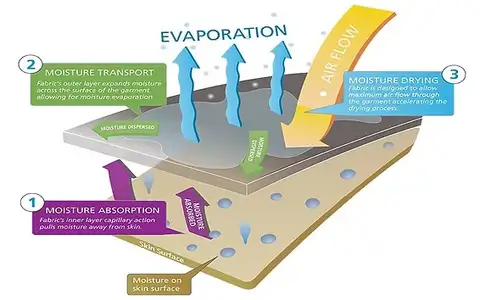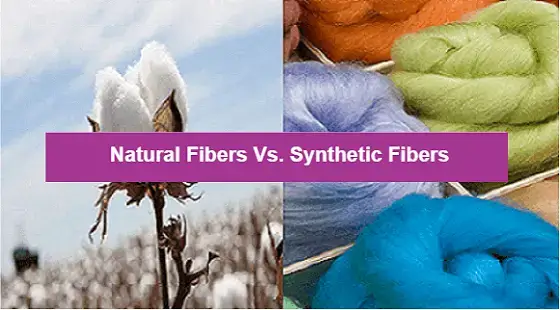Is Moisture-Wicking Material a Scam? Understanding What Really Works
Sweaty underwear is uncomfortable and embarrassing. Many brands claim their "moisture-wicking" fabrics will keep you dry, but customers often find themselves just as sweaty as before.
Moisture-wicking materials work by pulling sweat away from your skin to the outer surface of the fabric where it can evaporate quickly. However, not all moisture-wicking products are created equal - the effectiveness depends on fiber structure, fabric construction, and proper manufacturing techniques.

The underwear industry is filled with misleading claims about moisture-wicking properties. As a leading manufacturer with over 30 years of experience, I've seen countless "innovative" fabrics that fail to deliver on their promises.
What Is Moisture-Wicking and How Does It Actually Work?
Moisture-wicking sounds like marketing jargon, but there's real science behind effective moisture management in fabrics.
Moisture-wicking works through capillary action - the same process that allows plants to draw water from their roots to their leaves. In fabrics, specially engineered fibers create tiny channels that pull moisture away from the skin to the outer surface where it can evaporate.

When I first started developing moisture-wicking underwear at HAVING, I discovered that many manufacturers focus only on the fiber type without considering the complete fabric structure. True moisture-wicking requires three key elements working together:
- Hydrophobic inner layer that repels moisture away from skin
- Capillary channels within the fabric structure to transport moisture
- Hydrophilic outer layer that spreads moisture for faster evaporation
Many brands skip one or more of these elements, resulting in underwear that feels dry initially but becomes uncomfortable as activity increases.
Why Most Moisture-Wicking Underwear Fails to Deliver
Have you ever purchased "moisture-wicking" underwear only to find yourself just as sweaty as before? You're not alone.
Most moisture-wicking underwear fails because manufacturers focus on marketing buzzwords rather than engineering. Simply using polyester isn't enough - the fabric must have the right structure, treatment, and construction to effectively manage moisture.

In our testing lab at HAVING, we've analyzed dozens of competitors' products. The most common issues we've found include:
Poor Fiber Selection and Construction
Many brands use basic polyester and call it "moisture-wicking" without the proper fiber structure. While polyester is naturally hydrophobic (water-repelling), this alone doesn't create effective moisture management.
Effective moisture-wicking fabrics require specialized fiber shapes and arrangements. Flat fibers with grooved channels perform significantly better than round fibers at moving moisture away from the skin.
Our premium underwear uses a combination of specially engineered polyester fibers with a cross-section design that creates multiple channels for moisture transport. This isn't just marketing talk - it's measurable performance.
Inadequate Fabric Treatment
Many manufacturers skip crucial treatments that enhance moisture-wicking properties.
The best moisture-wicking fabrics undergo specialized treatments that modify the surface properties of fibers. These treatments create hydrophilic (water-loving) areas on the outer surface while maintaining hydrophobic properties against the skin.
At HAVING, we use a proprietary dual-treatment process that enhances both the inner and outer surfaces of our fabrics. The inner layer repels moisture while the outer layer attracts and disperses it - creating a one-way path for sweat to follow.
Flawed Garment Design
Even with perfect fabric, poor garment design can sabotage moisture management.
Effective moisture-wicking underwear requires strategic seam placement, proper fit, and ventilation zones. Compressed fabric cannot wick moisture effectively, and poorly placed seams create sweat traps.

Our design team spends months testing prototypes in real-world conditions. We've developed a seamless construction method that eliminates pressure points and maintains consistent wicking performance throughout the garment.
The Science Behind Truly Effective Moisture-Wicking Materials
To understand what makes moisture-wicking truly work, we need to look at the physics involved.
Effective moisture-wicking relies on capillary action, surface tension, and evaporation rates. The fabric must create a pressure differential that pulls moisture away from the skin and spreads it across a larger surface area for faster evaporation.
In our research laboratory, we measure wicking performance using standardized tests that track:
| Performance Metric | What It Measures | Why It Matters |
|---|---|---|
| Vertical Wicking Rate | How quickly moisture travels upward against gravity | Indicates fabric's ability to move sweat away from skin |
| Horizontal Wicking Area | How widely moisture spreads across fabric surface | Larger area means faster evaporation |
| Evaporation Rate | How quickly moisture converts to vapor | Determines how quickly fabric dries |
| Moisture Management Capacity | Total amount of moisture fabric can process | Indicates performance during heavy sweating |
Our premium moisture-wicking underwear outperforms competitors in all these metrics, particularly in maintaining performance during extended wear and heavy sweating.
Synthetic vs. Natural Moisture-Wicking Materials: What Works Better?
The debate between synthetic and natural fibers for moisture management is ongoing, but science gives us clear answers.
While natural fibers like cotton absorb moisture, they typically hold it against the skin rather than moving it away. Specialized synthetic fibers or engineered natural fibers perform better for true moisture-wicking properties.

At HAVING, we've tested countless fiber combinations and found that:
- Engineered polyester provides the best overall moisture management for underwear
- Nylon with specialized treatments offers excellent durability with good wicking
- Merino wool performs well in cooler conditions but less effectively in high heat
- Cotton absorbs moisture but doesn't effectively transport it away from skin
- Bamboo provides good absorption but slower drying than synthetics
Our premium underwear uses a proprietary blend that combines the best properties of multiple fiber types, creating a balanced performance profile that works across different activity levels and environments.
How to Identify Truly Effective Moisture-Wicking Underwear
With so many misleading claims in the market, how can you identify underwear that will actually keep you dry?
Look beyond marketing buzzwords and examine specific fabric details, construction methods, and independent testing results. Truly effective moisture-wicking underwear will specify the exact mechanisms that transport moisture.
When evaluating moisture-wicking underwear, consider these factors:
- Fabric composition - Look for engineered fibers specifically designed for moisture management
- Fabric weight and structure - Lighter isn't always better; the right structure matters more
- Treatment technologies - Check for specific treatments that enhance wicking properties
- Construction methods - Seamless or flat-seam construction prevents wicking disruption
- Independent testing - Look for brands that share actual test results, not just claims
At HAVING, we provide detailed information about our moisture management system, including the specific technologies and testing methods we use. We believe in transparency about how our products work.
The HAVING Difference: Our Approach to Moisture-Wicking Technology
After years of research and development, we've created underwear that truly delivers on the promise of moisture management.
Our moisture-wicking underwear combines specially engineered fibers, proprietary fabric treatments, and strategic garment design to create a complete system that keeps you dry and comfortable in any situation.

What makes our approach different:
- Triple-layer fabric technology that separates moisture from skin while accelerating evaporation
- Directional wicking structure that creates a one-way path for moisture
- Antimicrobial treatments that prevent odor-causing bacteria in moisture-rich environments
- Strategic ventilation zones placed where body mapping shows the highest sweat production
- Seamless construction that maintains consistent wicking performance throughout the garment
Our customers consistently report staying drier and more comfortable, even during intense activities or in hot, humid environments.
Conclusion
Moisture-wicking technology isn't a scam, but many products fail to deliver on their promises. True moisture management requires sophisticated engineering at every level - from fiber selection to fabric construction to garment design.
At HAVING, we've dedicated years to perfecting our moisture-wicking technology, creating underwear that genuinely keeps you dry and comfortable. We don't rely on marketing buzzwords - we engineer performance into every aspect of our products.
Get a Free Quote for Your Underwear Projects
Frequently Asked Questions (FAQ)
How long do moisture-wicking properties last in underwear?
Quality moisture-wicking underwear should maintain its performance for at least 50 washes when properly cared for. At HAVING, our products are tested to maintain performance for over 100 wash cycles.
Can moisture-wicking underwear help with excessive sweating conditions?
While moisture-wicking underwear can significantly improve comfort for people with hyperhidrosis (excessive sweating), it works best as part of a comprehensive approach that may include medical treatments for severe cases.
Is moisture-wicking underwear worth the higher price?
Quality moisture-wicking underwear costs more to produce due to specialized materials and construction. The comfort benefits justify the investment for most people, especially those who are active or work in warm environments.
How should I wash moisture-wicking underwear to maintain performance?
Wash in cold water with mild detergent, avoid fabric softeners (which clog the wicking channels), and tumble dry on low heat or air dry for best results and longevity.
Can moisture-wicking underwear completely eliminate sweat marks?
While good moisture-wicking underwear significantly reduces visible sweat marks, no fabric can completely eliminate them during intense activity or extreme heat. Our products are designed to minimize visible moisture while maximizing comfort.
